When taking over a tomato greenhouse for strawberry cultivation, the growers at Brookberries first encountered ozone disinfection for treating the drain water. The strawberry growers from Limburg have expanded significantly in recent years.
In preparation for new construction projects, ozone disinfection emerged as the only option. The growers are positive about it and have also learned more about the optimal use of the technology over time. This became evident when we visited the water room of the newest location in Belfeld at the end of February.
The newest greenhouses of Brookberries are located at Elshoutweg 28 in Belfeld. In total, the company now covers 30 hectares, spread over 5 locations. We walked along the concrete path next to the greenhouse, with grower Luuk van den Eertwegh, towards the water technical room.
There is a huge water room. Space has been reserved for future expansion. Another 4 hectares can be added to the current 9.6 hectares. This would also require expansion of the current installations.
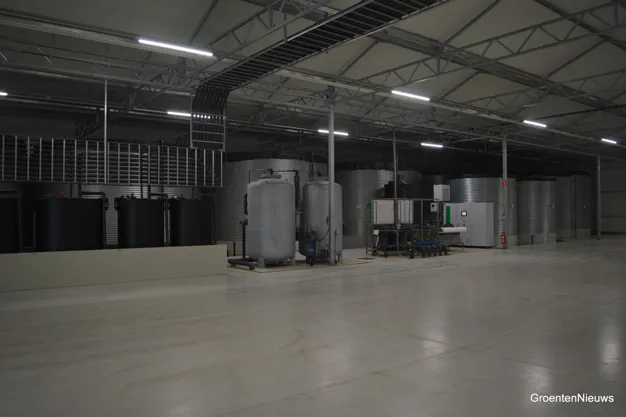
The water room at this Brookberries location is designed for growth
Clean source water
In the company hall, there is a whole row of silos with a smaller black tank in front of them. This belongs to the Hortizone, the ozone installation in which the growers have invested again. They aim to achieve disease-free irrigation water and also oxygen-rich irrigation water with ozone treatment. The growers will kill two birds with one stone.
In Belfeld, the growers use spring water. "It's rich in iron," says Luuk, explaining that normally, rainwater is not used. At least, not for irrigation. "We do cool the greenhouse roof with it in August."
The reason for not using rainwater is that there are many oak trees around the growers' greenhouses. "The leaves decompose, producing tannic acid. This has caused problems with our irrigation water in the past."
Noud Dings joins in. He is the son of owner Marcel, while Luuk is the cousin of owner Peter. This new generation of growers has experienced several water systems across the company's locations. Noud points out the dangers of red root rot and Phytophthora in strawberries. "Red root rot can easily spread through water."
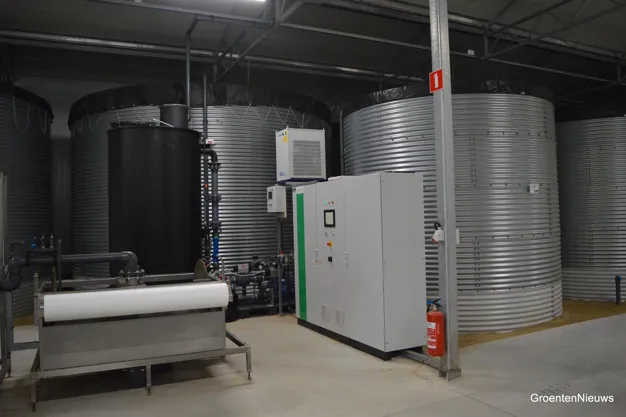
The Hortizone installation.
Oxygen-rich irrigation water
Of course, clean irrigation water is important for the growers. Using the Hortizone guarantees them that there is enough oxygen in the irrigation water. Werner van Mullekom, account manager of greenhouse horticulture at Agrozone, points out that with the Hortizone, the oxygen content in water can increase by up to 300 percent. "Most oxygen loss in water occurs when it goes through a pump." At Brookberries, they measure 11 to 12 milligrams of dissolved oxygen per liter.
The Hortizone treats the water batch by batch. Soon, in the conversation between the young growers and Werner, the number 18 comes up. 18 stands for the 18 minutes it takes to treat 1 batch of 4 cubic meters. Werner explains that this involves filling the black tank, treating the water with ozone, and then emptying the tank.
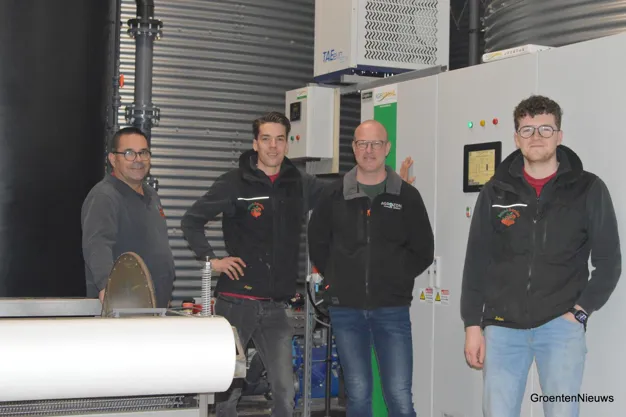
Peter van den Eertwegh, Luuk van den Eertwegh, Werner van Mullekom from Agrozone, and Noud Dings.
"We had to try something different"
In the former tomato greenhouse in Tegelen, the growers first encountered ozone technology. Peter van den Eertwegh, co-founder of Brookberries with Marcel Dings, recalls that the heater used for water disinfection in that greenhouse was nearing its end.
"So we had to try something different. That's why we turned to ozone. From colleagues, we heard great stories about the oxygen levels in irrigation water they achieved with it. Moreover, with the Hortizone, we are allowed to discharge water according to BZG legislation. With UV disinfection, you need a separate installation for this," he states.
Brookberries grows strawberries on coconut substrate. "If you were to use a UV disinfectant, the problem is that the water, especially with a fresh cultivation, quickly gets contaminated with coconut grit," Luuk notes. "At that moment, the UV disinfectant doesn't work optimally," Werner adds.
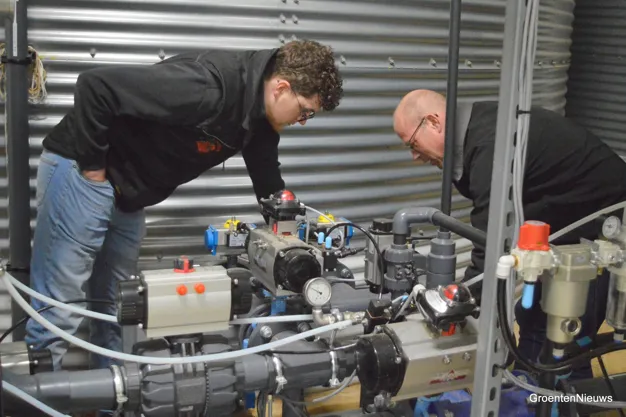
Noud seizes the opportunity to ask Werner where he can also take a drain water sample. They do this regularly at Brookberries, adjusting the feed schedule biweekly. A quarter of the drain water is mixed in, so it's important to know what nutrients are in it.
Acidity
For optimal operation of the Hortizone, the growers, together with Agrozone and installer Cogas, have invested time in custom settings. The acidity of the water is crucial here. There's no generic number for the optimal acidity, emphasizes Werner. "We have already set up units in, among others, tomato and cucumber cultivation and also in the cultivation of tray plants for strawberries. The right setting varies per situation."
Peter: "We chose ozone because of our belief in the system and because the company does everything to advance together. You have to keep learning."
An automatic sensor cleaner at the Hortizone ensures that the redox sensor stays clean. Werner: "Previously, this regulation wasn't standard. Now it is." Like with the ozone treatment of water, it's a chemical story. Werner: "At a redox potential of 750 millivolts, you have the guarantee of disease-free water here."
In Tegelen, in the former tomato greenhouse, the regulation wasn't part of the Hortizone, Luuk states. "There, we often had to clean the sensor. Not a problem, but it's nice that it's much less needed now."
For future expansion, Brookberries also has the choice of an inline model of the ozone unit, the Aqualine. Werner: "With it, growers can treat up to 150 cubic meters of water per hour." Peter nods and is familiar with the principle. For now, he doesn't need to make a new choice, but one thing he knows. "As long as the water enters the ozone installation with the right quality, it comes out well clean and oxygen-rich."
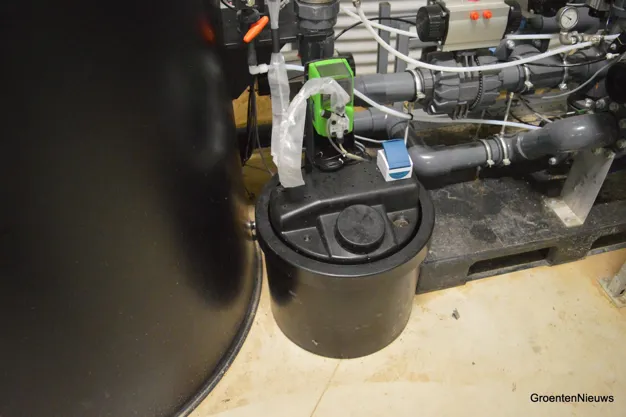
The installation with the acid regulation, i.e., the automatic sensor cleaner at the Hortizone, ensures the redox sensor stays clean.
For more information:
Werner van Mullekom
Agrozone
Dalenk 3h
7371 DE, Loenen
Tel.: +31 88 422 82 22
info@agrozone.nl
www.agrozone.nl
Brookberries
www.brookberries.nl
